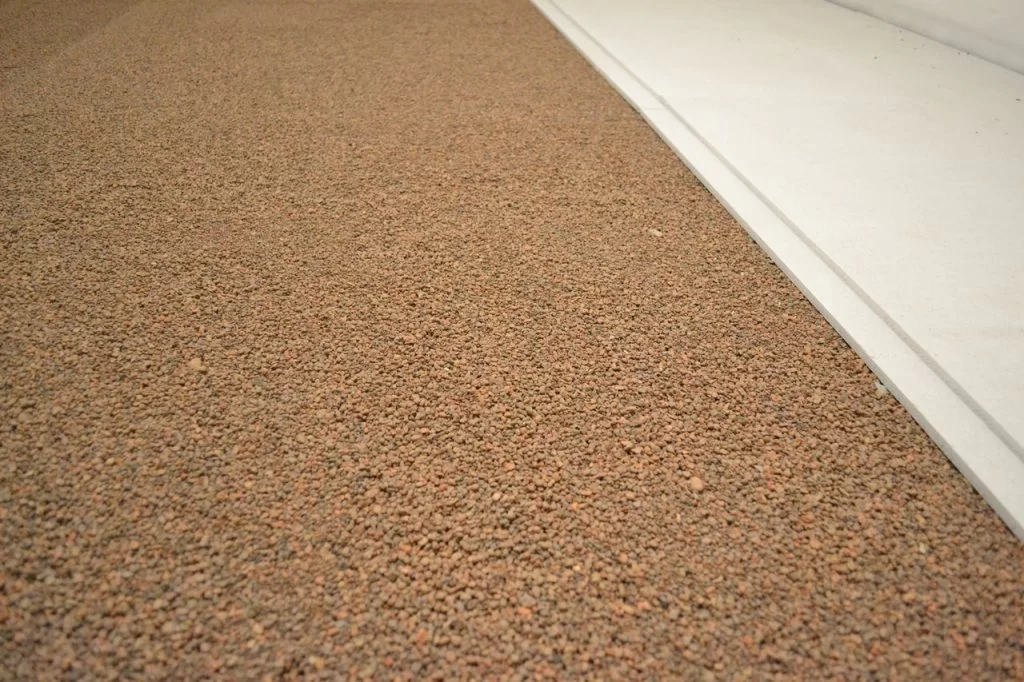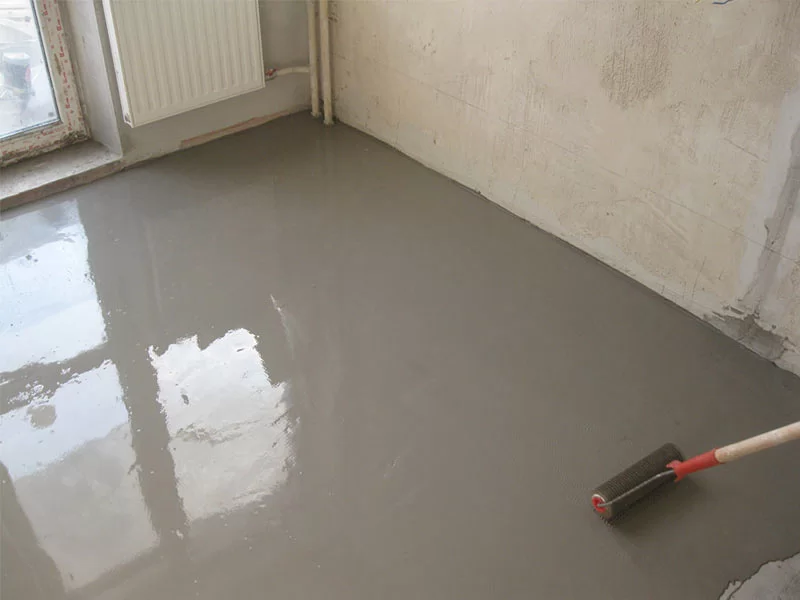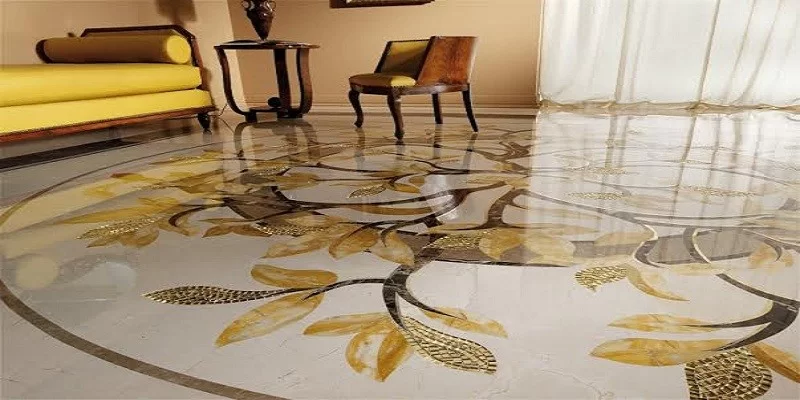
Compare dry or wet floor screed
Screeds are made for the device of a flat base for flooring. In addition, the screed can, if necessary, serve to create floor slopes in order to drain water; engineering communications can be laid in it. Screeds are divided into two types: dry and wet. With the help of our experts — professional builders — we have considered the features of both methods of flooring, analyzed the properties, advantages and disadvantages, which will help you make an informed choice of the appropriate method.
Dry screed

The concept of a dry screed includes several types of preparation for finishing the floor: bulk screed, prefabricated flooring, floor on logs, adjustable floor.
The bulk screed is arranged as follows: the base is cleared of debris, markings are applied to the walls around the perimeter of the room, indicating the upper level of the coating; a waterproofing layer of polyethylene film is laid with an overlap on the walls; a special damper tape is glued around the perimeter, guides are installed; a mixture of mineral crumbs is poured, which is aligned along the guides and compacted; sheets of gypsum fiber or fiberboard are laid on top of the backfill; the joints between the plates are puttied, then a moisture-resistant primer can be applied if the front layer is made of ceramic tiles.
Prefabricated flooring
Prefabricated flooring is a layer of chipboard, OSB, GVL boards, which is laid directly on a concrete base (floor slabs or concrete ground preparation). The plates are attached to the base with the help of an adhesive composition and dowel-nails. Prefabricated flooring serves as the basis for covering parquet, linoleum, carpet, wooden board.
Floor on joists
The floor on the logs is a frame made of wooden blocks, which are installed in increments of 400-500 mm on wooden linings or brick columns on a concrete or soil base. The timber for the log is pre-treated with fire-retardant compounds. A “rough” floor made of wooden boards, sheets of chipboard, OSB, plywood or MDF is laid on the logs, which serves as the basis for finishing the floor — plank, parquet, linoleum, carpet, laminate. If necessary, insulation can be laid in the space formed under the floor covering.
Adjustable floor
An adjustable floor is the same floor on logs, only the bars are not installed on linings, but on adjustable mounting bolts-racks that are screwed into the logs and attached to the base of the floor with dowels and nails. After installation, the logs are leveled by rotating the stand-bolts with a special key. After installation and alignment, plywood sheets are laid on the logs, which will serve as the basis for parquet, plank or linoleum front covering.
Wet screed

A wet screed is made from a cement-sand mortar in the following order: the base is cleaned of debris, dusted with an industrial vacuum cleaner; seal the defects of the base with a solution — cracks, chips; determine the level mark of the future upper surface and make marks on the walls along the perimeter of the premises; install beacons or guides from a steel thin-walled profile, which are leveled using a rack level; knead the solution on the basis that one room needs to be filled in at one time; pour the solution on the base of the floor and level it with the help of a rail-rule. The finished screed hardens within a few days, all this time it is necessary to take care of it — in hot weather, periodically water it with water to prevent cracking. After the coating has hardened to such an extent that it can be walked on, the guides are removed, and the resulting recesses are sealed with mortar and overwritten.
Wet screed can serve as the basis for laying rolled materials — linoleum, carpet, for laying ceramic tiles, as well as the basis for laying bases for floors made of piece materials — boards, parquet, laminate. An important condition for further work on the coating is the level of its humidity after setting — for laying each type of finished floor, there are standards for the moisture content of the base.
For the device of a wet screed, ready-made dry mixes are used, which must be kneaded on the spot, or a solution of individual components — sand and cement with water, is mixed, maintaining a ratio of 1: 3 — one part of cement, three parts of sand sifted and cleaned of impurities.
|
|
|
|
|
|
+ high strength and durability, service life — many decades;
+ relatively low cost compared to other types of underfloor foundations;
+ ease of work that does not require high qualifications;
+ short terms of performance of works;
+ fire safety, all screed materials are non-combustible;
+ environmental friendliness — the materials used do not emit any substances harmful to health.
|
— a long period of set of conditions for the finishing coating device, for example, for laying linoleum, the coating should dry out within 3-4 weeks;
— wet process, which produces a lot of dirt;
— high weight, which increases the load on the floor structures;
|
|
|
+ low weight, which does not create a significant load on the floors;
+ short terms of performance of works;
+ lack of dirt, unlike wet screed;
+ no complex equipment is required, such as wet screed concrete mixers;
+ ease of operation that does not require highly qualified performers;
+ creating a layer with good heat and sound insulation properties;
+ good maintainability.
|
— the possibility of some subsidence over time with insufficient compaction;
— low strength and short service life;
— the possibility of formation of voids under the flooring and punching under the weight of heavy furniture;
— increased dust formation.
|
|
|
+ simplicity and speed of work on laying flooring;
+ light weight, which does not increase the load on the floors;
+ universal — can be used for laying any type of finished floor, including ceramic tiles, which require a moisture-resistant plywood base;
+ does not increase the height of the floor, which is important for rooms with a small floor height;
+ service life can reach 10-15 years or more.
|
— with poor-quality installation and insufficient fastening, squeaks and small irregularities may occur;
— must be placed on a perfectly level ground;
— the design does not allow additional thermal insulation.
|
|
|
+ relatively low weight, which does not increase the load on the floor structures;
+ good maintainability;
+ the possibility of additional insulation of floors;
+ the possibility of laying communications in the space under the coating;
+ high heat and sound insulation properties.
|
— the installation process is laborious — it consists of many operations that require highly qualified performers;
— the height of the structure, which reduces the useful height of the premises;
— in case of poor-quality performance of work, the possibility of subsidence, the appearance of squeaks;
— low strength.
|
|
|
+ the ability to level any unevenness of the base;
+ light weight, which does not increase the load on the floors;
+ the possibility of laying engineering communications in the space under the flooring;
+ the ability to adjust the level of the floor;
+ good maintainability;
+ suitable as a base for all types of fine flooring.
|
— requires a high level of qualification of performers;
— in case of poor-quality performance of work, the appearance of defects, squeaks, subsidence is possible;
— cannot be used in rooms with a low floor height.
|
The main differences between materials
The main differences between dry and wet screed are as follows:
-
are made from completely different materials;
-
dry screed has several varieties, wet — in only one form;
-
wet screed has a much higher strength and durability compared to any type of dry screed;
-
wet screed requires prolonged drying, which delays construction time.
How are the materials similar?
Wet and dry screeds have one thing in common — they can be used for the same finishing floor covering.
Conclusions: An unambiguous conclusion in favor of one or another method of arranging the base under the floors cannot be made. On the one hand, when choosing, low cost, strength and durability of a wet screed can play a role, on the other hand, the need to speed up construction time and many other factors. The choice should be made for each case separately, depending on the functional purpose of the premises, the solidity of the building, the materials of the load-bearing structures, the pros and cons of each of the flooring methods.

Добавить комментарий
Для отправки комментария вам необходимо авторизоваться.